A Look at the Young but Ambitious Craft Beer Scene in Vienna
Amidst stunning architecture and a scenic landscape filled with rolling hills, snowy mountain caps, and rushing rivers, lies a long-standing brewing tradition primed for new growth. Austria is home to over 300 brewers now who made 9.8 million hectoliters (there are roughly 0.85 bbls/hectoliter) of beer last year; its people drink more than 110 liters of beer per year – only behind the Czech Republic and Germany for most Europe. Vienna, Austria’s capital, is a fitting image of the current state of the country’s beer scene. Many bars only have taps from storied breweries like Ottakringer or Trumer available. Zwickel, Helles and Pils reign supreme. IPAs are little more than a passing rumor with beers over 6% routinely raising eyebrows. It’s a city fixed between consistency and curiosity. All of these market factors were on display when I visited the Wiener Bierfest recently, just steps from the historic St. Stephen’s Cathedral.
A Bierfest in a Picturesque Setting
I’ve been to many beer fests in my time, but I’ve never been to one in such a stunning location. The Wiener bierfest was stationed right by the main city center, putting it in prime position for added foot traffic from curious tourists like myself.
The event featured over 20 beer tents, food stands and a brass band stationed on a big stage near the front. On the day I went, it was windy and cold, but that didn’t stop fellow drinkers from swigging big .5 and 1L glasses of Austrian beer. Both old and new brewers were present at the fest. While there wasn’t a distinct barricade between the two sections, it was clear to see where the old stopped and the craft beer upstarts began, due to the brighter visuals and higher octane beer that they offered.
Bierfest time 🍻 pic.twitter.com/yO4MJfUpbn
— Taylor Laabs 🍺 (@TaylorLaabs) May 23, 2019
Perhaps one of the most well-known young brewers in Vienna is Brew Age. I caught up with their brewmaster and co-founder (one of four) Johannes Kugler who was diligently stationed at their tent pouring the likes of their Alpha Animal New England-style Hazy IPA, which is one of their best sellers. In fact, their three best sellers are aggressively hopped. Along with the hazy, their other most popular offerings include Imperial IPA, Monkeyking and Pale Ale, Hop Bake. Each are an excellent version of the style, with the hazy IPA standing out in particular due its intense bouquet of juicy hop aromatics.
Ironically, they also sell an excellent Vienna-style lager, which Johannes mentions is a very under-the-radar beer style for Austrians. From my conversations with Johannes, it seems like the entire craft beer scene here is still a bit under the radar – kind of like what the American craft beer scene was 15-20 years ago.
The beer geek demographic, who hastily buy Brew Age’s hazy and hopped-up beers, is still a relatively small part of the massive drinking population. Johannes notes that tap takeovers and beer releases for something like for their Iced Barley Wine Ice Cracker garner little to no buzz because that element of U.S. craft beer culture hasn’t made it to Austria yet. Beer drinkers here are comfortable with drinking one beer for their entire life – perhaps because German and Austria beers are so impeccably made in centuries old brewhouses with the highest of brewing standards. It could also be because Heineken owns around 50% of the entire brewing community in the country.
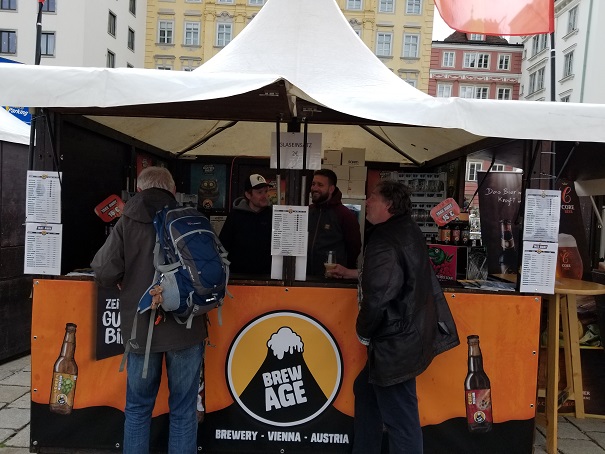
Johannes and his team don’t have the benefit of that history, notoriety, investment capital, or space – at least not yet. Instead, they rely on gypsy brewing. In this sense, Brew Age is similar to what a contract brewer would be like in the states. The main exception being that Brew Age brews their own beer, just not consistently in one place. Their operation is nomadic in nature, as Johannes and team will travel to larger brewing facilities around the area and brew on-location. This obviously saves on infrastructure costs and other financial commitments, but it’s not the brewing lifestyle Brew Age aspires to. Instead, Johannes is clear that they’re looking into opening up a taproom in Vienna soon. And while the taproom culture found in the U.S. is not a big thing in Austria, having a brewing space to call their own will help save stress and headaches when it comes to scheduling brew cycles and limited, one-off releases.
New Life in New Taprooms
While the bierfest happened right in the heart of Vienna, the taproom scene in Vienna is located more on the perimeter of the city. It was a 20 minute Uber to get to 100 Blumen, Vienna’s second biggest privately-owned production brewery. The setting of the taproom is no-frills and reminds me of some of the earliest taprooms I visited back in Minnesota. No-frills, simple bar, large tables, long benches, board games and good beer. It’s a proven concept that brewmaster Alexander Forstinger is confident will resonate with Austrian beer drinkers.
Now in 100 Blumen’s 3rd year of business, Alexander is very aware of the current perception of “craft” offerings in Austria. The vast majority of drinkers here are still very loyal to one brand and one beer only. Creating enough demand for new offerings is a challenge. “We have to appreciate the process of where we are with the market here… we’re still in the beginning for many craft drinkers.”
100 Blumen Zwickl + pretzels 🤘 pic.twitter.com/0DPAowNRib
— Taylor Laabs 🍺 (@TaylorLaabs) May 23, 2019
To bridge the gap between old and new, 100 Blumen is putting an American-spin on Austrian staples like Lager and Zwickel. He notes that while it is “basically impossible” to sell a beer in the taproom above 6% ABV, the brewery has seen more success with putting creative twists on lower alcohol offerings. So far, the strategy has proven to be a hit with drinkers. The taproom continues to grow in popularity and opens drinkers up to new drinking experiences. Alexander says about 90% of their taproom sales consists of their Lager/Helles/Zwickel offerings.
100 Blumen’s taproom is open three days a week, which might seem like a small-level of availability in the U.S. but is quite a large undertaking in Vienna. For many brewers getting started in the space, it pays dividends to start small and grow with demand. This is the case for the one-year-old BrauHaus Ten.Fifty, which is currently only open on Thursdays. Situated in a more residential setting, the brewhouse of BrauHaus is scenic, consisting of two stories and an outdoor biergarten in the front. Co-founder Martin White is pleased with the growth of his young operation so far. Boasting two IPAs and a Pale Ale, BrauHaus Ten.Fifty is taking an aggressive approach to the market here, but perhaps their best offering is a style many local drinkers will be more familiar with. Coming in at 5% and pouring a hazy yellow, their Unfiltered Pils is an excellent rendition of the style and was one of the better beers I had on the trip due to its bright, crisp flavor and subtle hop undertones.
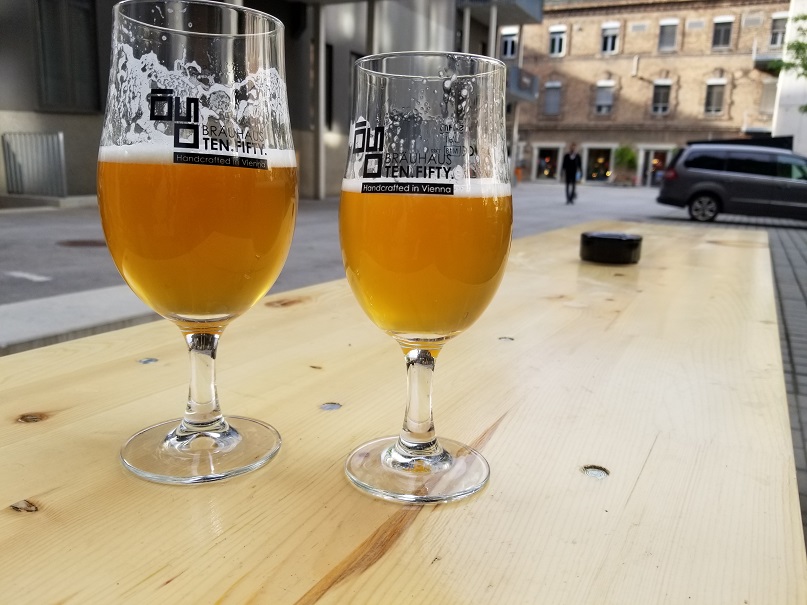
With beers like their Unfiltered Pils and American Style IPA, there is a clear path to growth for the brewery both in production and taproom growth. Martin notes that they’re in the process of building out a winter biergarten attached to the second floor bar area. He’s also considering opening the taproom up for more than just one day a week, which should be a welcome sight for any Vienna beer drinker or tourist alike.
Brewers Looking to Gain a Foothold
And while taprooms represent new opportunities to engage with Austrian drinkers, perhaps the easiest way for craft brewers to gain a foothold in the market is through the nomadic strategy of gypsy brewing. Much like Johannes at Brew Age, Manuel Bartolacci, brewmaster at Eugen Artisan Ales has built his business around the style. To help spread the craft beer “virus” as he puts, Eugen aims to create small batches of experimental brews made with seasonal ingredients to appeal to the more curious Austrian drinker who wants to branch out from their standard lager.
“The big tradition, mainly for lager beers, doesn’t let the market grow. Younger people are more keen on to tasting new beer styles, but prices of craft beers don’t really help…I can see that people in Austria are a bit scared of anything that is too dark, too strong, sour…they do prefer to stay on the safe side and drink something they know. IPAs though are really helping to break the chains.”
While the cost-per-batch might be a bit higher, Manuel highlights why this type of brewing and business strategy makes a lot of sense for small, startup brewers in the space due to the lack of financial overhead and local government redtape Eugen deals with. The one hurdle with this strategy is not being able to generate the same type of authentic connection a beer drinker might get when drinking at a brewery taproom.
It’s a delicate balance that the likes of Eugen and Brew Age seem to have a grip on. Afterall, it’s all about getting their beer in the hands of new beer drinkers, whether it’s at a supermarket, beer fest or somewhere in between. “You have to know where to sell… not every bar is into craft beer or would understand why your product costs twice of three times the price more than an mass produced beer. You win when you get people to taste the final product so they realise how good craft beer is,” said Manuel.
After consuming beers from both small craft brewers and larger, storied operations, I’m confident that Vienna will be able to find a suitable balance between the two. There is adequate room and beer drinking appetite for both sectors of the vibrant Vienna beer scene to thrive. Whether it’s a lager that has been around for a centuries, or a new, small-batch IPA that was just brewed last week, Vienna is a great place to experience the past, present and potential future of what beer has to offer to us. Cheers!
-
Great Beer from Vienna, very cool IPA. One of the best beers I ever tasted


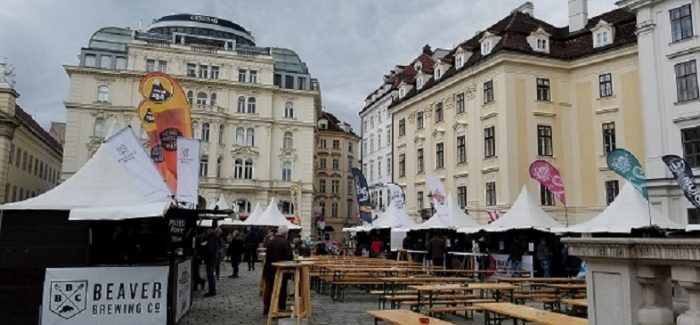

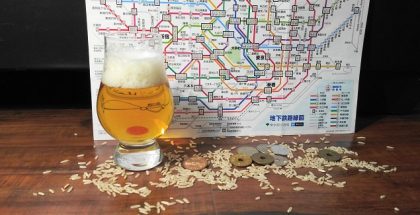
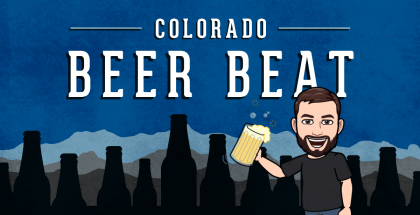
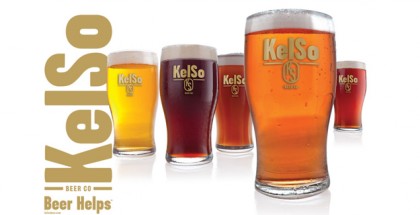
Comments